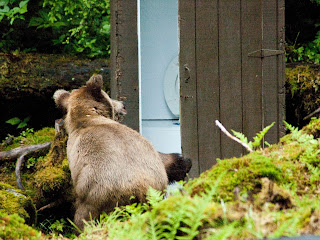By Bill Wagner
Auspicious is not the
definition for the North’s initial efforts at the outset of the Civil War in
1861 into 1862.
President Abraham
Lincoln quickly discovered to his dismay that leadership was lacking. As the
Union forces suffered setbacks at the hands of the Rebels, Lincoln tried to
find a leader to stem the tide.
Winfield Scott,
George McClellan, Don Carlos Buell and Henry Halleck all came up short.
 |
| One of Fort Donelsopn's "big" guns overlooks the Cumberland River |
Ulysses Grant (the S
came later) proved to be the man Lincoln needed to lead the Union army.
Grant began his
ascent along the Cumberland and Tennessee rivers at the then little-known sites
of Fort Henry and Fort Donelson.
“The soldiers and
sailors who fought here, on both sides, were volunteers who did so because they
were fighting for what they believed in, and those reasons are numerous,” said
Doug Richardson, chief of resource education and visitor services at Fort
Donelson.
“Soldiers walked,
slept, fought, suffered, and died on this land, a major battle in this most
important war that created who we are as Americans today,” he said.
Fort Henry on the
Tennessee River fell to a Union Gunboat attack on Feb. 6, 1862, but 2,500 rebel
soldiers scrambled away 12 miles to Fort Donelson on the Cumberland River
before Grant’s troops could slog their way to the action.
Militarily, Fort
Donelson was a much better spot for the Confederates. They had eight 32-pound
seacoast artillery pieces and several other big guns to control river access.
They fortified an outer defense line and waited.
Grant was slow to
leave Fort Henry, and then his 15,000 troops were hampered by the weather and
soggy ground as they plodded toward Donelson.
Thanks to the
Confederates concentrated efforts to fortify their position, Grant’s troops
were able to advance unopposed and encircle the fort. The battle began on Valentine’s Day 1862.
This time the Confederates held their own against Union gunboats, but were no
match for Grant’s force that grew as reinforcements continued to arrive.
Fearing a total
defeat and capture, Rebel generals John Floyd, Gideon Pillow and Simon Buckner,
the southerners massed their troops on the Union’s right flank in an attempt to
break out and escape to Nashville.
The rebels were
actually in the process of making this all work when they were inexplicably
ordered back to their original defensive positions.
Pillow and Floyd
turned over command to Buckner, took a couple thousand troops and high-tailed
it for Nashville. Other Rebels went with Lt. Col. Nathan Bedford Forrest.
However the bulk of
the southern forces 5,000 men, were left in an untenable position. Buckner
asked Grant for terms of surrender.
The Answer: “No terms except an unconditional and
immediate surrender can be accepted.” Buckner was none too happy, but in the
end, he had no choice but to give up.
The capture of the
two forts was the first major victory for the North. A new – and much needed –
hero materialized — Ulysses “Unconditional Surrender” Grant.
“Our visitor center
receives over 40,000 visitors per year. When you include those folks, plus
those who come to walk trails, run, nature-watch, picnic, visit the National
Cemetery, it adds into the hundreds of thousands,” said Richardson.
Richardson is in his
23rd year with the NPS, arriving at Fort Donelson in September 2010 as part of
a career goal to work at a national park where he could further study and
understand Ulysses S. Grant.





